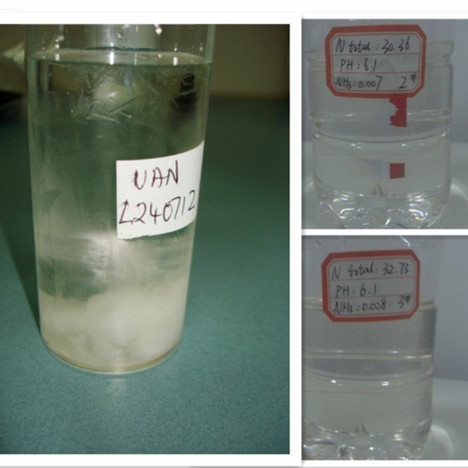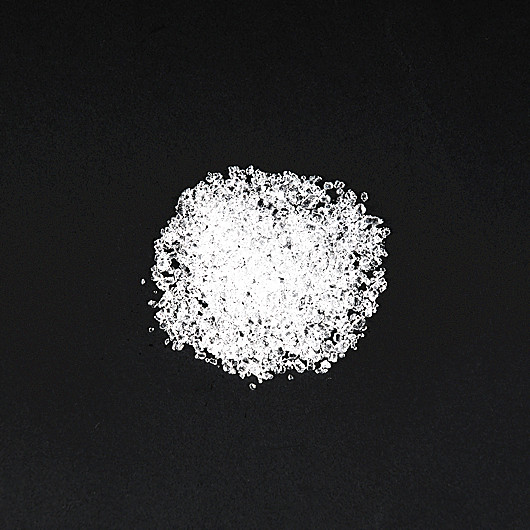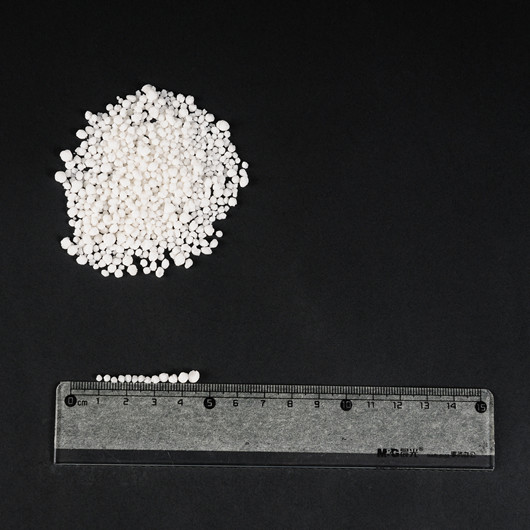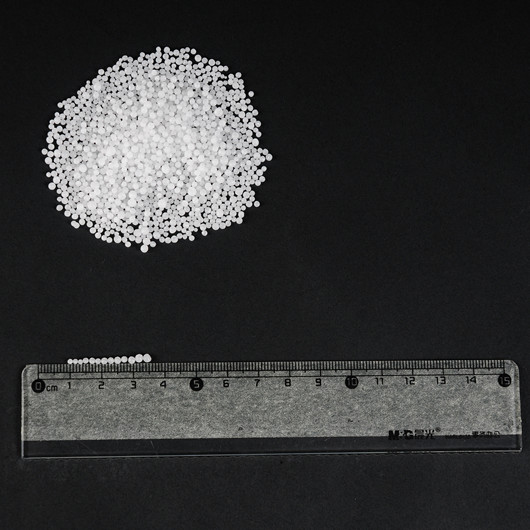Urea Ammonium Nitrate (UAN) solution is a vital nitrogen-based fertilizer widely used in modern agriculture to improve soil health and enhance crop yields. Composed of both ammonium (NH₄⁺) and nitrate (NO₃⁻) forms of nitrogen, UAN provides a balanced and effective nutrient source for crops. UAN is particularly popular in large-scale farming due to its flexibility in application and its ability to deliver nitrogen in a form that plants can readily absorb.
In this article, we will explore the role of UAN in fertilization practices, focusing on its effectiveness, benefits, and optimal application strategies. By reviewing key data and offering insights through tables, we aim to provide a comprehensive understanding of how UAN fits into modern agricultural systems.
Why UAN is Critical for Fertilization
Urea Ammonium Nitrate (UAN) is a highly effective nitrogen fertilizer that plays a crucial role in modern agricultural practices by providing plants with essential nutrients for growth. Nitrogen is one of the three primary macronutrients required by plants, and UAN delivers it in a balanced form, promoting optimal plant growth, increasing crop yields, and improving overall plant health. The unique formulation of UAN contains both ammonium nitrogen (NH₄⁺) and nitrate nitrogen (NO₃⁻), each with distinct benefits and behaviors in the soil.
Ammonium Nitrogen (NH₄⁺) is a form of nitrogen that is easily available to plants, especially in the early stages of growth. It is absorbed by plant roots and used to build proteins, enzymes, and other essential components. However, ammonium nitrogen is prone to leaching in certain soil conditions, particularly in sandy soils or areas with heavy rainfall. When it leaches, it can seep into groundwater, potentially leading to environmental pollution. To mitigate this risk, UAN is often applied in controlled doses, or in conjunction with other soil management practices such as incorporating the fertilizer into the soil.
Nitrate Nitrogen (NO₃⁻), on the other hand, is the form of nitrogen that plants can use more quickly. It supports rapid growth, especially during the vegetative stage, as plants require large amounts of nitrogen to build strong leaves and stems. However, nitrate nitrogen is highly mobile in the soil, which means it can be lost through denitrification in waterlogged soils or through leaching if not properly managed. In some cases, excessive nitrate levels can also contribute to water pollution, causing harmful algal blooms and affecting water quality.
The combination of ammonium and nitrate nitrogen in UAN provides a balanced nutrient source for plants, ensuring they have a steady supply of nitrogen throughout different growth stages. This dual nitrogen supply helps meet the plant’s needs at various phases, ensuring healthier growth and higher yields. UAN is particularly beneficial for crops like corn, wheat, and rice, which require a consistent nitrogen supply for optimal growth and productivity.
Application of UAN in Different Crops
The use of Urea Ammonium Nitrate (UAN) fertilizer varies significantly depending on the crop type, its nitrogen requirements, growth stages, and the specific soil conditions in which it is applied. Each crop has different nutritional needs and responds to nitrogen at various stages of growth, which directly influences how much UAN should be applied for optimal results.
Corn, for example, is one of the most nitrogen-demanding crops. It responds exceptionally well to UAN due to its high nitrogen uptake during key growth stages, particularly during the vegetative and reproductive phases. Research shows that corn can benefit from nitrogen applications of 150–200 kg/ha. With the right amount of UAN, yields can increase by 12-15%. This significant yield boost is why UAN is a staple in corn production, particularly in areas like the Midwest in the United States, where corn is a major crop.
Wheat, on the other hand, has slightly different nitrogen requirements. While it still benefits from nitrogen fertilization, it requires less compared to corn. The ideal application rate for wheat typically falls between 120–160 kg/ha of UAN, depending on soil conditions and the expected rainfall. Wheat usually shows a 6-10% yield increase with proper nitrogen management. For instance, in regions such as the UK or the Northern Plains of the US, wheat farmers often use UAN during the early spring and before the flowering stage to support the crop’s growth.
Cotton, which is less nitrogen-demanding than corn, requires about 110–140 kg/ha of UAN. The yield increase for cotton typically ranges from 7-9% when UAN is applied correctly. Cotton is more sensitive to excessive nitrogen, so precise application during critical growth stages—such as early boll formation—can lead to a more sustainable increase in yield.
Finally, rice also benefits from UAN, but application rates should be tailored to the specific variety and growth conditions. Rice requires 130–160 kg/ha of UAN, with expected yield improvements of around 9-11%. UAN helps support the early stages of growth when rice is establishing roots and tillering, and ensures consistent growth through its vegetative phase.
UAN’s application varies significantly by crop type, growth stage, and local environmental factors. Understanding these variables is essential for maximizing yield potential and optimizing nitrogen use efficiency across different crops.
Table 1: Recommended UAN Application Rates for Different Crops
| Crop Type | Recommended UAN Rate (kg/ha) | Yield Increase (%) |
|---|---|---|
| Corn | 150-200 | 12-15% |
| Wheat | 120-160 | 8-10% |
| Soybeans | 100-120 | 10-12% |
| Cotton | 110-140 | 7-9% |
| Rice | 130-160 | 9-11% |
Table 1: Recommended UAN Application Rates for Different Crops
UAN Application Rate: The recommended amount of UAN to apply per hectare, depending on the crop.
Yield Increase: The expected increase in crop yield as a result of UAN application.
This table demonstrates that UAN is particularly effective for corn, showing a significant yield increase with higher application rates, while crops like cotton and rice show moderate increases.
Benefits of UAN for Crop Nutrition
Urea Ammonium Nitrate (UAN) is highly valued in agriculture for its ability to deliver nitrogen in forms that are immediately available to plants. This makes it an effective fertilizer, as nitrogen is a key nutrient required for various processes in plant growth, such as protein synthesis and chlorophyll production. UAN provides nitrogen in two primary forms: ammonium (NH₄⁺) and nitrate (NO₃⁻), both of which offer unique benefits for plant uptake.
The split nitrogen release from UAN allows plants to absorb nitrogen at different stages of their growth cycle. Ammonium nitrogen (NH₄⁺) is readily available to plants, especially during the early stages of growth. It is more stable in the soil and can be absorbed by plants directly. However, since ammonium nitrogen can be prone to leaching under certain soil conditions, it is beneficial to apply UAN in controlled amounts to avoid nitrogen loss. In contrast, nitrate nitrogen (NO₃⁻) is more mobile in the soil and rapidly available to plants, particularly during their active growth phase. Nitrate nitrogen supports rapid growth and is especially critical during the later stages of crop development, when plants require more nitrogen to support leaf and stem development.
The flexibility of UAN also makes it ideal for use in both pre-plant and side-dressing applications. For example, when applying UAN to corn, it is often used in side-dressing at a rate of 150–200 kg/ha around the V6 to V8 growth stage. This helps ensure that the plants have sufficient nitrogen during their peak growth period. For wheat, UAN is typically applied pre-plant at 120-160 kg/ha, ensuring that nitrogen is available as the crop begins to germinate and establish its root system.
UAN can be applied through surface spraying or fertigation systems, where it is mixed with irrigation water to ensure uniform distribution. This method allows for precise nitrogen application and is especially useful in areas with large-scale irrigation systems. By adjusting the application rate and timing, farmers can optimize nitrogen uptake and minimize environmental risks. For instance, applying UAN during early stages of crop growth and during mid-season can help reduce the risk of over-fertilization, leaching, or nutrient runoff into nearby water sources.
Table 2: Nitrogen Release Profile of UAN vs. Urea
| Fertilizer Type | Ammonium Nitrogen (%) | Nitrate Nitrogen (%) | Total Nitrogen Content (%) |
|---|---|---|---|
| UAN | 14% | 16% | 32-34% |
| Urea | 0% | 0% | 46% |
Table 2: Nitrogen Release Profile of UAN vs. Urea
Ammonium Nitrogen: The percentage of nitrogen in ammonium form, which is more stable in the soil.
Nitrate Nitrogen: The percentage of nitrogen in nitrate form, which is quickly available to plants.
Total Nitrogen Content: The total amount of nitrogen provided by the fertilizer.
This table compares UAN and urea, showing that UAN has a balanced nitrogen profile, with both ammonium and nitrate nitrogen, while urea contains only ammonium nitrogen. This makes UAN a more versatile fertilizer in terms of its nitrogen availability to plants.
Best Practices for Using UAN
To maximize the effectiveness of Urea Ammonium Nitrate (UAN) and ensure that crops receive the right amount of nitrogen at the right time, farmers should adopt several best practices. These practices help optimize the efficiency of the fertilizer, reduce the risk of nitrogen loss, and ultimately improve crop yields. The following best practices are essential for UAN application:
1. Soil Testing: Assessing Nitrogen Levels Before Application
Before applying UAN, one of the most important steps farmers can take is to perform a soil test. Soil testing helps determine the existing levels of nitrogen and other key nutrients, allowing farmers to adjust UAN application rates based on the specific needs of the soil and crop. Without this information, it can be easy to over-apply or under-apply nitrogen, both of which can negatively impact crop health and the environment.
For example, if a soil test reveals that nitrogen levels are already high, the farmer may opt to reduce the UAN application rate to avoid over-fertilization. Conversely, if nitrogen levels are low, the farmer can increase the application to ensure the crops receive sufficient nutrients to support optimal growth. A typical nitrogen deficiency in soil might prompt farmers to apply 100–150 kg/ha of UAN for crops like wheat or rice, while over-application might lead to excess nitrogen, which could increase the risk of nitrogen leaching into water sources.
By conducting soil tests, farmers ensure that UAN is applied in the right amounts, preventing waste and reducing the potential for nutrient runoff into the environment. Testing should ideally be done every season or every other season, depending on the crop rotation and soil conditions.
2. Split Applications: Reducing Nitrogen Loss and Ensuring Consistent Supply
Split applications are one of the most effective strategies for optimizing the use of UAN. This practice involves applying the fertilizer in stages rather than all at once. Typically, UAN is applied in two or more doses: once during pre-planting and then again during side-dressing as the crop grows. The benefit of split applications is that it helps reduce nitrogen losses due to leaching or volatilization, ensuring that nitrogen is available to the plant when it needs it most.
For example, in corn production, a farmer might apply 150–200 kg/ha of UAN in two stages: 50% during pre-planting, before the corn begins its early growth, and the remaining 50% during side-dressing, around the V6 to V8 growth stage. This ensures that the corn has a steady supply of nitrogen during its peak growth period, minimizing the risk of nitrogen deficiency when the plant needs it most.
Similarly, in wheat, side-dressing applications of UAN are typically made when the crop reaches the early tillering or boot stage. A typical application might be 120–160 kg/ha split into two applications: the first before planting, and the second during mid-growth. By applying UAN in two stages, the farmer ensures that the crop receives nitrogen in a more efficient and controlled manner.
3. Optimal Timing: Aligning UAN Applications with Crop Growth Stages
Timing is another critical factor in maximizing the effectiveness of UAN. Plants have different nitrogen requirements at different stages of growth. For example, nitrogen is crucial during early vegetative growth and flowering stages but is less important after the plant has reached maturity. Applying UAN at the right time ensures that plants have the nitrogen they need to support healthy growth and development.
For instance, in corn, the most critical time for nitrogen uptake is during the vegetative growth phase, particularly between the V6 and V8 stages, as the plant is rapidly developing leaves and stems. Applying UAN at this stage, when the corn plant is actively growing, ensures that the nitrogen is available to support photosynthesis and energy production. The application rate for corn during this stage typically falls between 150–200 kg/ha of UAN.
In rice, nitrogen is most important during the early vegetative and reproductive stages, so it is essential to apply UAN before the tillering and heading stages. Nitrogen application during these times supports tiller development and grain formation. A typical application rate for rice might be 130–160 kg/ha, depending on the specific variety and soil conditions.
4. Irrigation: Fertigation Systems for Uniform Nutrient Distribution
For crops grown with irrigation, fertigation is an efficient method of applying UAN. Fertigation involves mixing UAN with irrigation water, which ensures uniform distribution of nutrients throughout the crop’s root zone. This method is particularly useful for large-scale farming operations or in areas where water availability and efficient nutrient distribution are critical.
For example, in cotton farming, which is often grown in dry conditions with irrigation, fertigation can be used to apply UAN through the irrigation system. This helps ensure that the cotton plants receive a consistent and steady supply of nitrogen without the risk of uneven fertilizer distribution. The amount of UAN applied through fertigation can vary, but a typical rate might be 100–140 kg/ha over multiple applications.
The advantage of fertigation is that it allows farmers to apply fertilizer more precisely and at the right time. By synchronizing fertilizer applications with irrigation schedules, farmers can ensure that the plants are receiving nutrients when they are most active in nutrient uptake.
By following these best practices—soil testing, split applications, optimal timing, and irrigation management—farmers can maximize the effectiveness of UAN in their cropping systems. Applying the right amount of nitrogen at the right time not only improves crop yields but also helps reduce the environmental impact of fertilizer use. Proper UAN application leads to more sustainable farming practices, helping to ensure long-term soil health and more efficient use of resources. Whether growing corn, wheat, rice, or cotton, these best practices can help farmers optimize their use of UAN, leading to higher yields and healthier crops.
Table 3: Environmental Considerations and UAN Management
| Factor | Effect of Excessive UAN Application | Management Strategy |
|---|---|---|
| Soil Leaching | High risk of nitrogen leaching into groundwater | Apply in split doses, incorporate into soil |
| Ammonia Volatilization | Nitrogen loss due to surface evaporation | Incorporate UAN into soil immediately after application |
| Nitrate Pollution | Potential contamination of nearby water sources | Use controlled-release UAN formulations |
Table 3: Environmental Considerations and UAN Management
Soil Leaching: When UAN is over-applied, excess nitrogen may leach into groundwater, causing contamination.
Ammonia Volatilization: If UAN is left on the surface, it can evaporate as ammonia gas, reducing nitrogen efficiency.
Nitrate Pollution: Excessive application can lead to nitrate contamination in nearby water bodies.
This table emphasizes the importance of managing UAN applications to minimize environmental risks while ensuring the fertilizer remains effective.
Conclusion
Urea Ammonium Nitrate (UAN) is a versatile and efficient fertilizer that plays a crucial role in modern fertilization practices. By providing a balanced mix of ammonium and nitrate nitrogen, UAN supports healthy crop growth and improved yields. When applied correctly, it can significantly enhance agricultural productivity, making it an essential tool for farmers. However, like all fertilizers, it is important to apply UAN judiciously, following recommended practices to maximize its benefits while minimizing environmental impact.
Farmers can optimize their use of UAN by understanding the nitrogen requirements of their crops, following best application practices, and considering environmental factors. The data presented in the tables offers practical insights to guide fertilization decisions, helping ensure that UAN remains an effective and sustainable option for crop nutrition.
Our company specializes in the production and export of high-quality Urea Ammonium Nitrate (UAN) Solution, a leading nitrogen fertilizer that plays a critical role in modern agriculture. With a focus on providing farmers with a reliable and efficient source of nitrogen, we offer UAN solutions that support enhanced crop growth, higher yields, and improved plant health. Our products are manufactured using the latest technology and meet international standards, ensuring consistency and quality. We are committed to supporting sustainable agricultural practices and delivering superior value to our global customer base, helping to optimize fertilizer use and reduce environmental impact.



